-
Posts
793 -
Joined
-
Last visited
Content Type
Forums
Detector Prospector Home
Detector Database
Downloads
Posts posted by Lanny
-
-
3 hours ago, Steve Herschbach said:
I have found nuggets weighing under 1/10th grain (1/4800th Troy Ounce) with at least a dozen different detector models. I get stuff that weighs less (my digital powder scales only go down to a tenth grain) and so I honestly don't know about anything under that. It's not worth it to me to get a scale accurate enough to weigh gold I used to toss back in the creek when gold panning.
We throw it back in for nugget seed and have a good laugh.
All the best,
Lanny
-
My neck of the woods, up close to 7000 ft. elevation. (Two pack mules of the hydrocarbon variety in the background.)
Bottom, slightly left of centre, pretty tiny, can't recall the weight, Gold Bug Pro. (A dime is a dime is a dime in US and Canada, same size for comparison.)
Smallest pieces here, sub-gram, all nuggets found with Minelab X-Terra 705, a somewhat interesting machine that if you go low and slow enough in ground that's producing nuggets, it just might surprise you as it did me with the tiny stuff it would find with the DD coil (the tiny stuff was extremely close to the surface however).
All the best,
Lanny
-
I love it when people find ways to improve things.
Nicely done, and all the best,
Lanny
-
Tarsacci MDT 8000 specifically targeted for wet sand/beach detecting/artifact hunting in bad soil, made by a company specializing in underwater detectors, does not sound like a multiple frequency machine from what I could find: here's a link
http://www.dankowskidetectors.com/discussions/read.php?2,152652
(If I can't post this link to another forum, please just kill it.)
Sounds like a highly specialized detector designed for a specific niche purpose, interesting . . .
All the best,
Lanny
-
On 2/14/2019 at 10:36 PM, kiwijw said:
Ok...here you go. You asked for it.... Might pay to get yourself a coffee & settle in.

I will add that our ground is insanely mild, as I do bang on about. But it is a HUGE factor to my "success" as it allows me to crank all my detectors up to full max sensitivity. Ok...some times that is a bit ratty but I am able to deal with that & with a trained ear still get the signals that matter. Sorting the wheat from the chaff.
Gold Monster gold.
Found some sluice pipes.

scratching a round here....
Got me these
A collection of Gold Monster gold from one of my locations
Collection of Zed gold from the same location. Generally a bit bigger & wayyyyy deeper.
Playing mountain goat. Using the GM 1000 as a hiking pole. GB2 under my arm. Note sluice face top right. This was walking back down from the place in the picture below this one.
Detecting a high shelf way above the present day river.
Loving that bedrock.
Loving more bedrock
From this area....
Got these
Off this bedrock
And out of this crevice got this...
From here out of the old timer piles got these 5.
From more bedrock
THE END: I need a coffee.
Round 2 will be the GB2. But not tonight. Cheers
Best of luck out there
JW

Great pictures JW! All that tiny gold sniffed out, amazing!! Love seeing a bit of your neck of the woods too.
All the best,
Lanny
-
Where we're chasing the gold now, closer to four hours, but we've got a gold camp set up to stay at, so always a place to sleep. However, much better than the 16+ hours we used to drive to get to the gold . . .
All the best,
Lanny
-
22 hours ago, phrunt said:
You're a very interesting guy Lanny, I'm glad you've started posting here and I look forward to hearing more of your tales.
Thanks for reaching out, much appreciated, and I'm glad you're having some success chasing the gold as you learn the ropes.
All the best,
Lanny
-
12 hours ago, Tnsharpshooter said:
Welcome.
Thanks, and all the best,
Lanny
-
Golden Grams of Goodness: Part 2
First, we set up the detectors, then started to ground balance our machines. The first thing I noticed was the iron bars were high! It didn’t seem to matter where I swung the detector, the background feedback was high in iron. I knew instantly that was going to affect the detection depth on the VLF, and the high concentration of iron in the bedrock was also going to cause problems for the Minelab PI as well, and that heavy mineralization did run interference on both machines. (After all, whether a VLF [very low frequency] or a PI [pulse induction] machine, they’re both wired to find metal, and iron is definitely a metal. For whatever reason, many rookies forget this fact, and they think there’s something wrong with their detector if their machine won’t ignore high concentrations of iron.) Moreover, when I’d get a signal, the numbers would jump around on the VLF display and would not pin dead on, which they do quite often in milder ground, necessitating that I dig down to the target, disturb the target, then scan again.
Of note, many times nuggets were over the top of big pieces of ironstone, or under or beside them, and sometimes chunks of gold were sited in intact material that overlay thick bands of high quality iron that was running in veins about two inches thick! With all of the natural metal everywhere, it was turning out to be a challenging day. In fact, several times I got the coil over such thick intrusions of iron that the detector overloaded; now, that really is hot material to try to find nuggets in for sure! Furthermore, depth was seriously limited, and the proof of this was that in any material around several inches thick, which was still tight on bedrock, I couldn’t even get a reading on half-gram pickers down in the bedrock cracks.
*** Prospecting tip: when your detector is finding good and juicy concentrations of nuggets in some sections of bedrock with milder conditions, yet the detector is so obviously struggling to handle the conditions in still other sections, break out the sniping tools! The detector has already proven to you that the gold is there in concentration on the bedrock, so you must be smarter than your detectors’ limitations (PI or VLF) due to mineralization. Instead of fighting a losing electronic battle, put the detectors down and test, test, test by sniping!! We were amazed at what we were missing due to the detectors’ blindness in those severe conditions. Yes, amazed really is the right word as we took home a lot of gold we’d have missed if we’d dumbed ourselves down and only relied on the detectors’ brains which had a serious case of iron flu. ***
To elaborate, we knew the sassy pickers were there because sometimes we’d get a broad signal over an area, something normally interpreted as ground noise, not as a positive target, yet by digging and panning, we gathered all kinds of pickers in the pan the little VLF would normally scream on. The proof of good gold certainly was in the pan! However, on this day, the symptoms of the iron flu offered only silence from the detector. The iron mineralization had clearly infected both machines as the PI wasn’t doing any better on the small stuff because a positive target to any detector is a positive target, whether ferrous or non-ferrous.
Furthermore, with such a massive concentration of ironstone and banded iron in the bedrock, shallow depth was the rule of the day, and smaller targets that were normally a breeze to hear on average bedrock either didn’t make a peep or the broad disturbance in the threshold sounded like ground noise. To compound matters, many of the nuggets and bigger flakes were pancake flat. Now, for those of you that have done a lot of detecting, anything on edge is much harder to detect vs. a target lying flat and face-up or one which is resting at a fairly shallow angle while mostly face up. Moreover, with many of the larger flakes being so flat and on edge, going super slow while using small coils was a necessity to try to hear any tiny fluctuations in the threshold that day amongst all of the iron clatter. However, just try to imagine the concentration required to filter the genuine gold signals from the false signals generated by all of that iron, and you’ll have some picture of what we struggled with.
All the best,
Lanny
To be continued . . . -
Golden Grams of Goodness: Part 1
November is not usually a time of year that I get to chase the gold, as by the time November rolls around the ground usually requires some dynamite or some equally powerful force to break through the frost to get to the gold. However, this year has been a year of exceptions. In September, we had early snow and frost with well below seasonal temperatures that carried into October, and that doesn't happen very often as usually the weather is rather mild. However, after the early blast of Arctic bad temper, the weather shook itself out until the first week of November with temperatures soaring above average, so this allowed the chance to engage in some gold sleuthing when normally I'd be reduced to only dreaming of chasing the gold.
I have two sons, and the eldest loves to chase the gold, while the other will chase the gold given the opportunity, but he doesn't have the same level of passion. Me eldest was with me on this trip, and he was with me on our epic gold adventure when we truly slew an army of nuggets early in the summer (I have yet to post that story), so he was eager to have a chance to hone his detecting and sniping skills.
The area we dropped into to work was full of bedrock pinnacles. These pinnacles were formed of an iron-hard bedrock, so hard that the big equipment had negligible effect. In fact, smoke was pouring off the bucket teeth and blades of the excavators as they tried to outmuscle the mother rock. As a result, there was a section of ground about the size of two school buses parked side-by-side, but slightly longer.
Looking down into the excavation, there were three pools of standing water as well as a small stream of clear seepage water running diagonally across the northern, more elevated end of the bedrock. The southern end was where the largest pool of water was, and the eastern side of the excavation had a culvert that was collecting the water from the stream to then divert it through a long series of interconnected culverts to a sump where a six-inch diesel-powered pump was working night and day to keep that sump cleared.
Over the entire area of exposed bedrock, there were many buried, small gutters with high, then lower humps, and throughout the area, there were those dark pinnacles of super-hard bedrock, some of them rising up almost four feet, resulting in an area that could not be cleaned out properly by the modern miners with their big equipment. The area was perfect for detector and sniping work, making it a perfect area for us to tackle.
To be continued . . .
All the best,
Lanny
-
18 minutes ago, Steve Herschbach said:
And there is more!
Lanny has one of the longest active threads created on the related forums due to his amazing story telling skills. And I do believe he coined the term "sassy gold"!
Bedrock and Gold: The mysteries . . .
Always great to hear from you Lanny!!
Yes, busted Steve. I have been telling gold tales for a while, it's true, and every year, I gather a few more as I keep chasing that sassy gold (thanks for the credit for coining the term).
Steve has always made me feel welcome and appreciated no matter what forum I was posting information on, plus he's one of the most knowledgable and helpful people I've ever had the pleasure to know, an outstanding person, truly!
Many thanks, and all the best,
Lanny
-
21 hours ago, BeachHunter said:
Very interesting. Thank you sir and as always welcome aboard!
Thanks for the welcome, and I appreciate your kindness.
All the best,
Lanny
-
22 hours ago, GB_Amateur said:
Nice to hear more about you Lanny. British Columbia once again sounds like one of the (few?) places where unsearched/undersearched ground is still yielding. Glad you've taken the opportunity to savor it.
Your experience helping the big boys (and getting to keep what you find) reminded me of what the Las Vegas sports books used to do (and maybe one or two still do). When the US football lines (odds) were first determined (typically on Sunday, a week before play) they'd invite a couple sharpies to make wagers, but for a limited price. They would then adjust the lines (in the direction of the bets) until there was no more interest. The experienced bettors got some good bets and the bookies got a cheap 'lesson' on where to open for the public.
Thanks for the comments, and that's quite an interesting story about Vegas, one I'd never heard before.
All the best,
Lanny
-
Just wanted to take a moment to introduce myself to those that have no idea who I am or what I'm up to.
I mainly metal detect for nuggets now (chased the gold in Alaska, Nevada, Utah, Arizona, Idaho, Montana, north-central British Columbia, south-eastern British Columbia, Alberta, but now I spend almost all of my time chasing the gold in British Columbia, Canada), used to dredge, sluice, high-bank, snipe, etc., (still do a bit for fun) but for more than a few years now, I've been associated with a large-scale placer operation, one that has slapped on me the title of their mining consultant. Sounds grandiose, however in no way is it, but they like to have me do testing for them with my detectors after they've finished cleaning a section of bedrock with their massive, heavy equipment.
Why have me on site? To see what they're missing. Furthermore, after I've finished poking around, they've gone back and taken more bedrock (sometimes several feet) at times when I get a lot of gold in a hurry (or they've headed in another direction if there's a good line of pay shooting off under the overburden away from where they were trending), and other times when there's hardly any gold found with the detectors, they bury that bedrock right quick. It's a win, win situation for both of us as they value what I can do with my machines, and I value the privilege of the incredible opportunity. Their only caveat is that I can't tell the total weight of the gold I find to anyone outside of their crew (and I always must report it to them), but hey, who can't live with that, right? Oh, and they let me keep what I find, won't take a percentage (I've tried many times).
In addition, I know a lot of other claim and lease owners that have properties they're not currently working, ones with abandoned excavations and sites, or ones they haven't got to yet, and they love to have me snoop around with my detectors as well, and if I find anything promising, they set up and get after the gold. I've been doing that for quite a few years, but I still like to check out unfamiliar, un-staked ground too.
In addition, I like to write stories about my gold hunting outings, and oftentimes, I'll include information for any rookies out there that are trying to figure things out as they get started. Why? That's how I got started; a few good people (my original mentor is now 88) took me under their wing and taught me the ropes (a few clichés too many in that sentence, I know).
My one son is now a dedicated nugget shooter (the other one lives thousands of kms away), and I love training him, plus my wife is now onboard with chasing the gold (she used to love panning my dredge concentrates, always heavy with goodies and always a good time for her and my mother-in-law [yeah, I know, sometimes the word fun and mother-in-law don't get used together in the same sentence]), and I'm ordering my wife a shiny new detector this winter because she's seen what we're getting (she loves to pan down our scoops of quick finds from the detectors which we slap in the pans when they're target rich for her to have some fun with; we call that speed-panning as it saves us the downtime of isolating the positive signals out of the scoop each and every time, giving us bonus time swinging the coils).
Looking forward to get to know many of you, and some of you I already consider friends from associations on other forums . . .
All the best,
Lanny
-
Wow, Moore Creek, I sure missed out!
Beautiful finds posted on this thread, amazing!!
All the best,
Lanny
-
Nicely doe, truly!
All the best,
Lanny
-
That sure is beautiful gold! Sweet finds!!
Nicely done, and all the best,
Lanny
-
Jim, your story about chasing the gold in the hydraulic pit was a tale that had to be told. I find people all of the time that try to tell me all of the gold has been found or that if the oldtimers worked a spot, they got it all, but you've proven with your story what the possible truth really is; there's often gold left if a person has the determination to be a bit innovative, which you were, and it paid off.
Nicely done, and it's great to hear from you again, and I miss the days on your Alaska gold forum; you and your wonderful wife did such a great job of hosting your site.
All the best,
Lanny
-
Alaskaseeker, great story of a fun find, something to dream about for sure, such a great piece!
Thanks for the story, really enjoyed it.
All the best,
Lanny
-
Loved the story, and the adventure with the border guards too, quite puzzling, or maybe not if it's only about making some extra coin outside of official duties.
Thanks for taking the time to write the story and post the picture, loved it.
All the best,
Lanny
-
Such a great thing to do Paul, lots of class for sure.
All the best,
Lanny
-
What a superb surprise! Absolutely amazing, and congratulations on sticking with the hole on the second dig to recover such a fabulous find, truly incredible!
Nicely done, and all the best,
Lanny
-
Thanks to all for the feedback as based on what you've said, I've ordered both coils at a smoking-hot price (so I really can't lose much), but I won't get them over any gold ground until the spring thaw, whenever that is . . . (A bit of an unknown at my latitude!)
So, maybe in the fall I'll be able to give an opinion on how I like them.
All the best, and thanks again,
Lanny
-
Interesting thread, and lots of good ideas expressed so far, especially the comments on why spend a gazillion dollars on a machine as a rookie when there are excellent VLF's out there that will still sniff out a lot of gold in good gold areas where you're not dealing with extreme mineralization or extra-deep gold.
I love hunting with VLF's for the same reasons others do; it's not a tiring process in any way to swing the machine, and I have a lot more fun.
Having said that, when I need my PI, I'm glad I've got it, but looking back on when I started, I wouldn't want to have started with a heavy machine vs. a lightweight machine. Moreover, today's VLF's are a lot better equipped to handle the ground and are able to "think" with their computer brains about what's going on in the ground with tracking, etc., etc.
I'd cut my teeth on a new generation VLF dedicated gold machine, then move up if you really develop a love for nugget hunting. Chasing nuggets is often a lonesome pursuit with many barren stretches between nuggets, and it requires a lot of serious dedication to keep at it let alone the dedication required to research ground and the dedication to learn every nuance of your detector.
On a different note, one that Steve and others have reflected on before, I'd love Minelab to figure out how to get their new-gen GPZ tech. into a much lighter package if at all possible. Sometimes I get tired of dragging around what sometimes feels like a garage door on the end of the shaft, so I'll take a sporty little VLF for a spin whenever possible instead . . .
All the best, and good luck with whatever your decision is,
Lanny


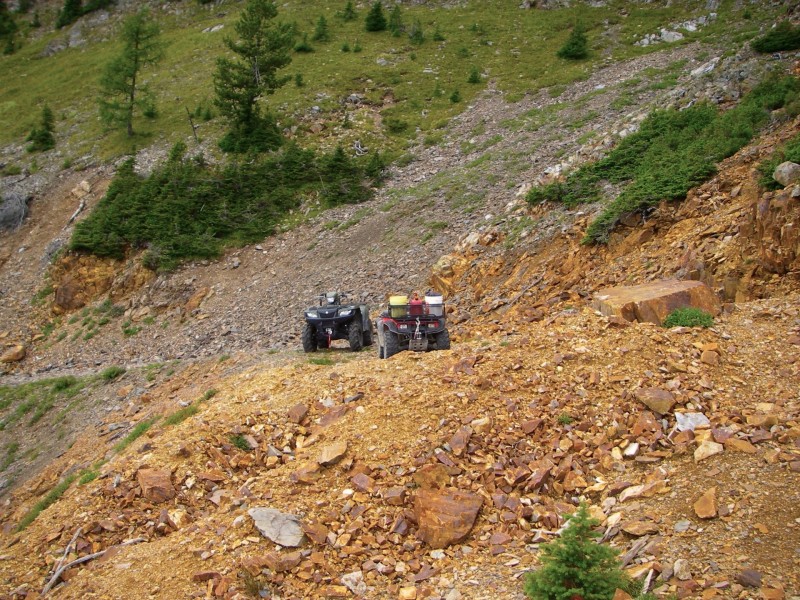
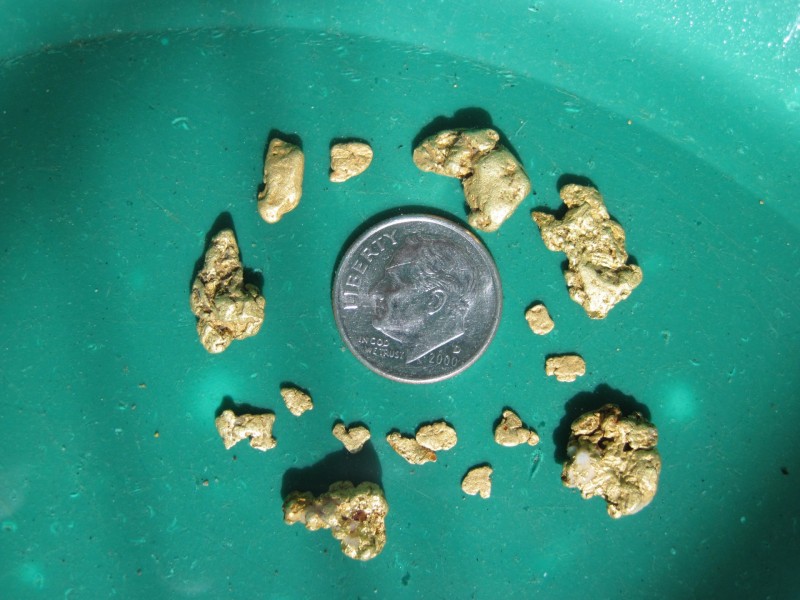

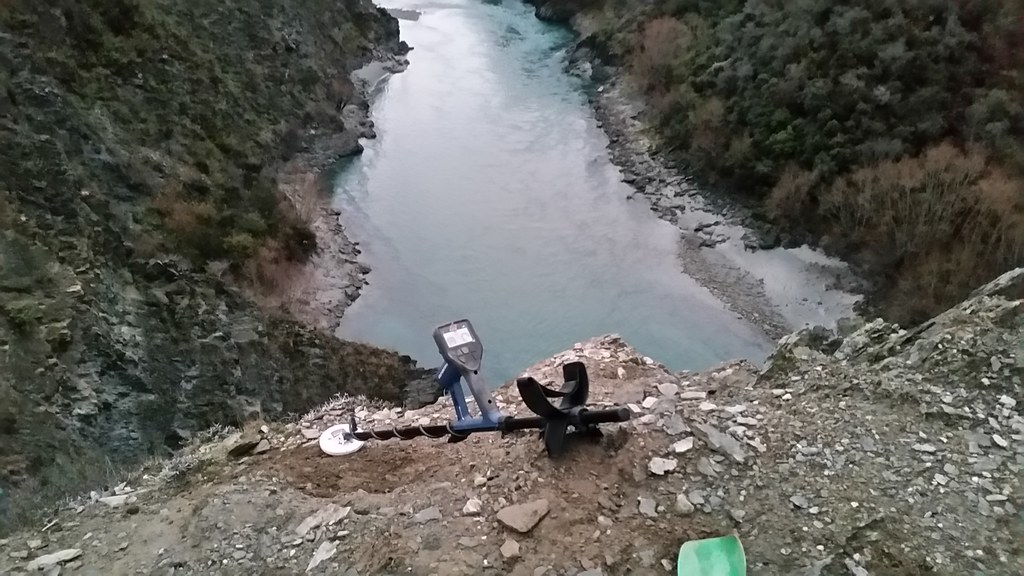

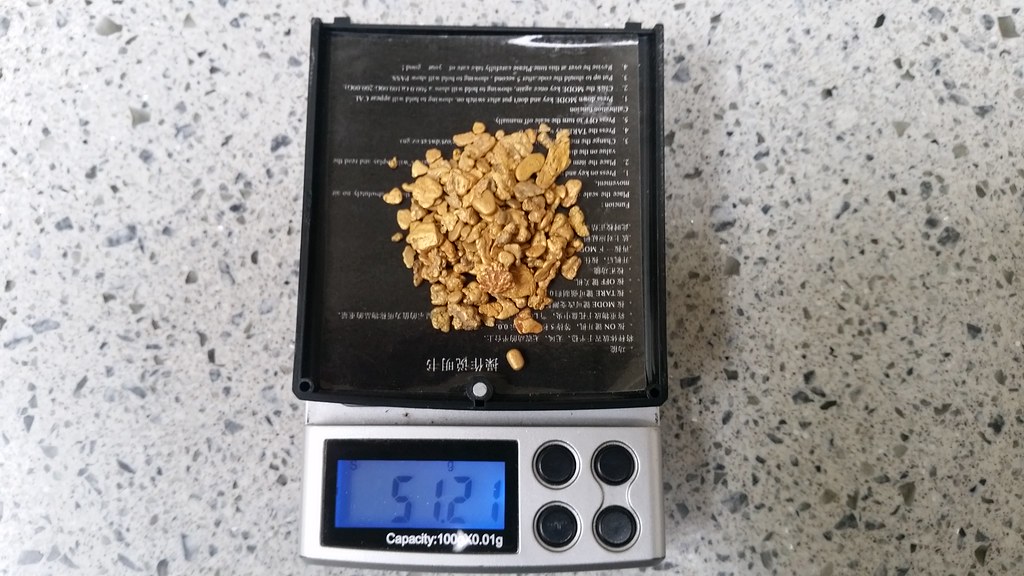
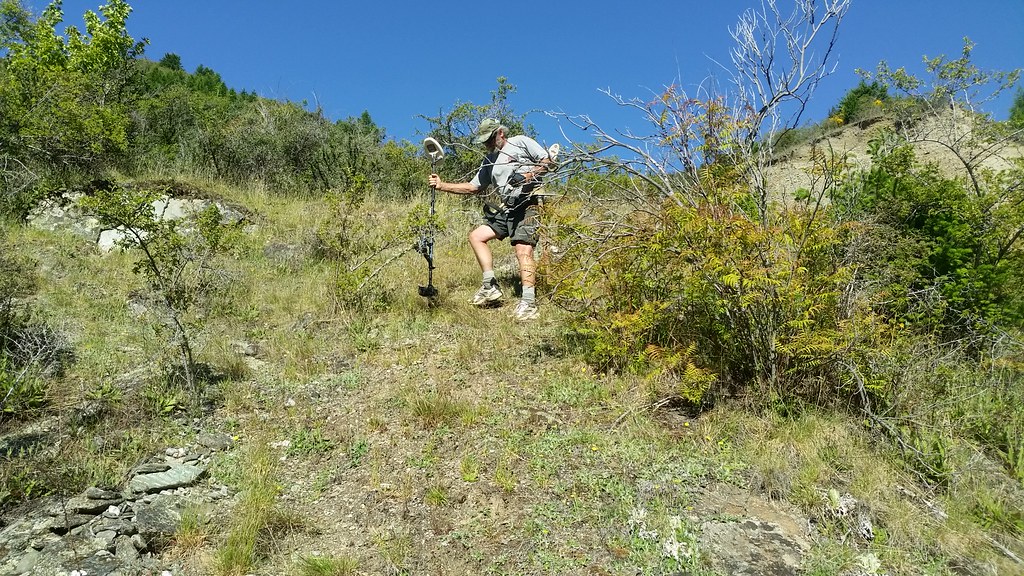

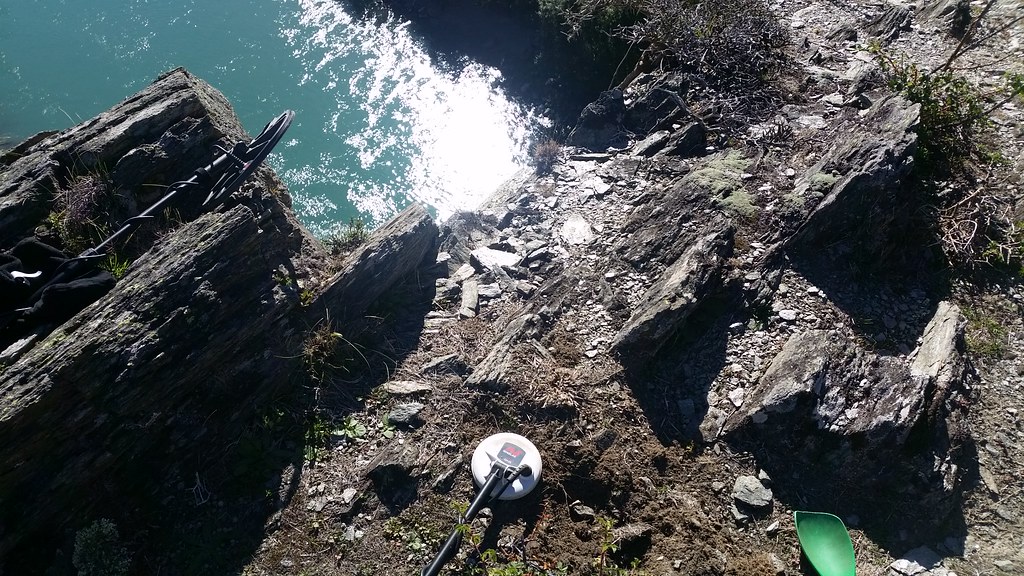
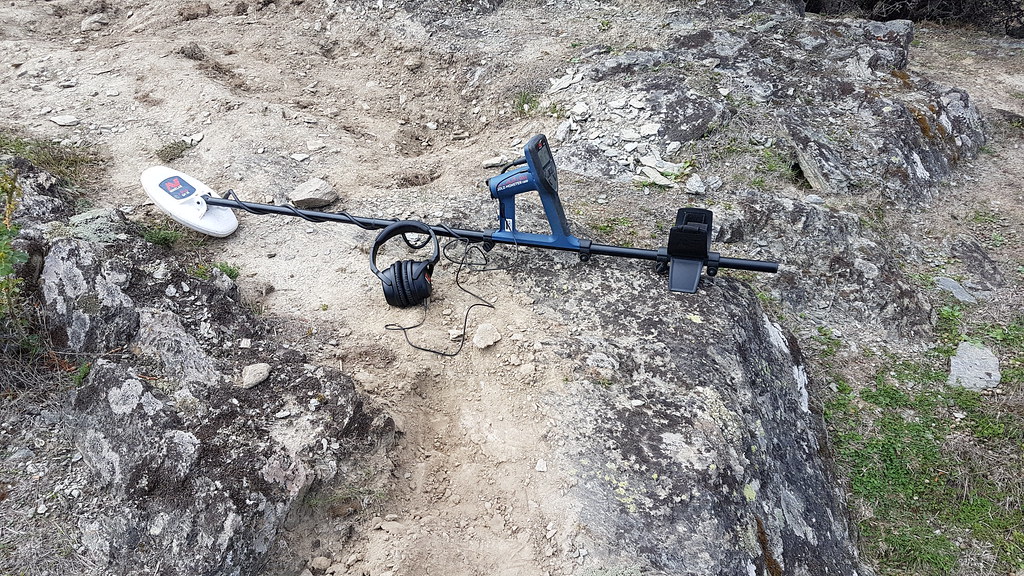
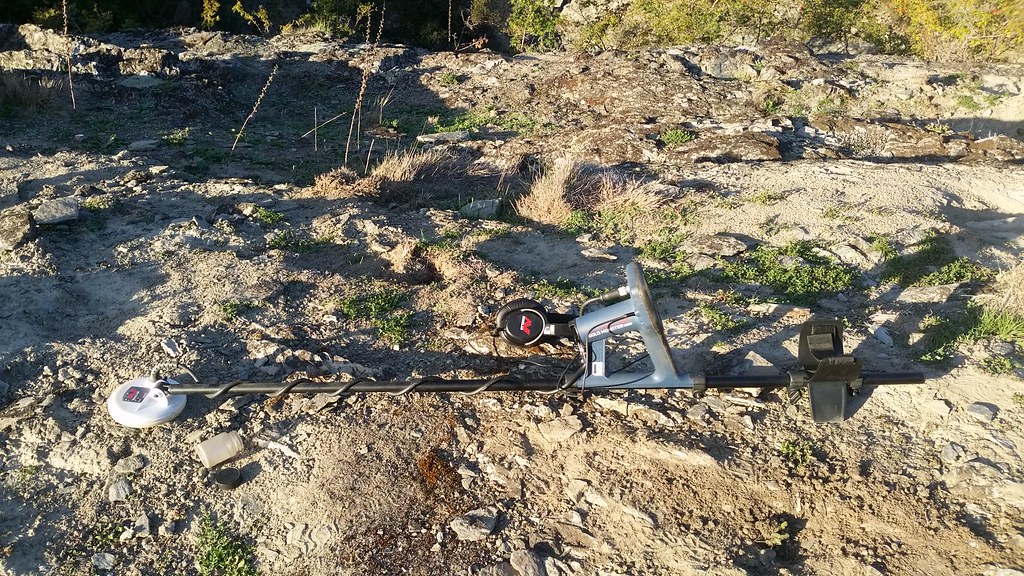
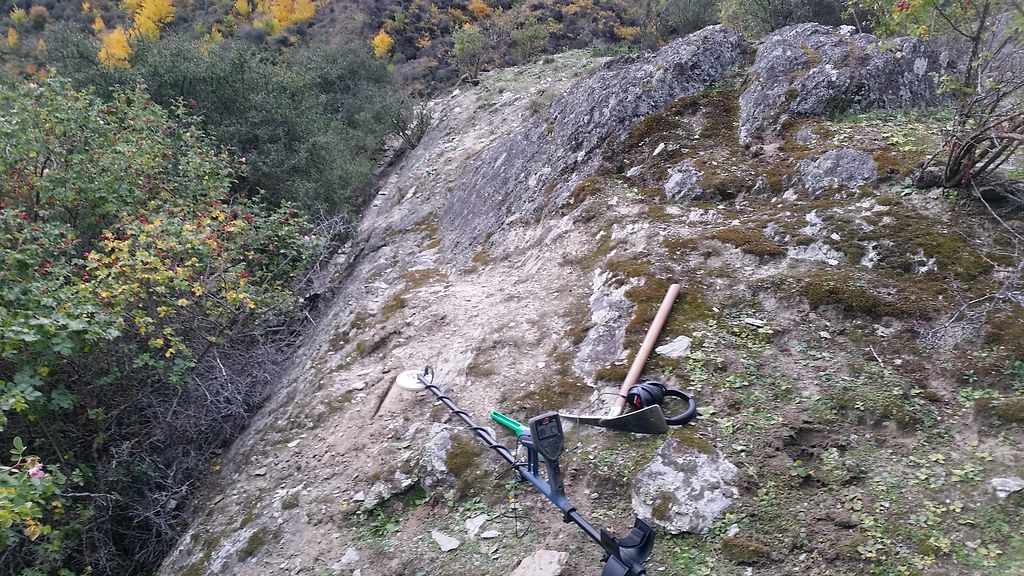




Video - Equinox 800 Nugget Detecting Difficult Ground
in Minelab Equinox Forum
Posted
Those are tiny finds indeed . . .
All the best, and thanks for posting the video,
Lanny